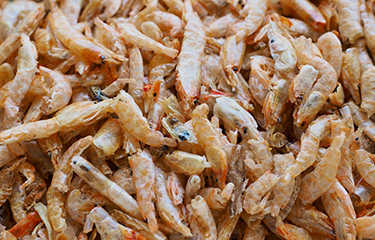Vietnam adjusting seafood export strategy to cope with slower sales to China

Seafood exporters from Vietnam are sending more dried and processed products to China to cope with a decline in sales caused by the latter’s tough measures against imported frozen products to contain the spread of COVID-19.
Exporters are also exporting less frozen seafood, and are rushing to have employees vaccinated to get adapted to the new situation.
Seafood exports from Vietnam to China, one of its major export markets, began to slow down during the closing months of last year. Strict measures imposed by Chinese authorities on import cargoes to avoid any potential transmission of the coronavirus caused delays in the delivery of seafood shipments from Vietnam.
The trend continues this year. China (excluding Hong Kong) was the only major market out of the top four destinations that saw sales values decline in May. Sales to China went down 25.7 percent year-on-year to 95.9 million (EUR 80.3 million) in May, which was higher than the drop of 15.7 percent in April.
The value of the seafood exports to China in the first five months also contracted 6.7 percent year-on-year to USD 348.3 million (EUR 291.6 million), customs data showed.
Of the total, sales of shrimp during January-May fell 19 percent year-on-year to USD 137 million (EUR 114.7 million). The export value of sea fish (excluding tuna) also slid 5 percent to USD 70 million (EUR 58.6 million) in the period. The decline was partly offset by the higher sales of pangasius with USD 165.5 million (EUR 138.6 million), up 2 percent year-on-year.
According to Vietnam Association of Seafood Exporters and Producers (VASEP), China’s moves against imported cargoes have discouraged seafood exporters from Vietnam from shipping live and frozen seafood, while encouraging them to export dried and processed products.
On the shrimp front, exporters from Vietnam are scaling down sales of black tiger shrimp, mostly fresh and frozen, and frozen vannamei, while focusing more on processed vannamei. In previous years, black tiger shrimp accounted for between 90 and 94 percent of Vietnam’s total shrimp exports to China. However, last year’ sales of black tiger shrimp fell to 25 percent of the total, while shares of vannamei and sea shrimp rose to 39 percent and 36 percent, respectively. Black tiger shrimp and vannamei accounted for 35 percent and 54 percent, respectively, of the total shrimp sales in the first five months of this year.
The export value of frozen vannamei to China increased just 2 percent year-on-year to USD 67 million (EUR 56.1 million) over January-May, but sales of processed vannamei soared 173 percent year-on-year to more than USD 6 million (EUR 5 million) in the period.
Sales of sea shrimp to China also slid 58 percent year-on-year to USD 15.6 million (EUR 13 million) in the first five months, accounting for 21 percent of the total shrimp sales.
In total, Vietnam’s frozen shrimp sales to China over January-May shrank 85 percent while the export value of dried shrimp jumped nearly six times and sales of processed shrimp grew 67 percent from a year ago, VASEP said.
The export value of frozen pangasius fillets also saw a decline of 12 percent year-on-year to USD 118 million (EUR 98.8 million) in the period while sales of frozen whole-fish pangasius surged 78 percent to almost USD 47 million (EUR 39.4 million).
Sales of dried sea fish (excluding tuna) were up nearly 6 percent to USD 35 million (EUR 29.3 million) in the first five months, despite a steep decline of 48 percent in May. The export value of other processed sea fish went up 53 percent year-on-year while sales of frozen fresh fish fell 42 percent.
Sales of grilled fish and surimi surged 13 percent year-on-year to USD 23 million (EUR 19.3 million) over January-May.
According to VASEP, China’s tough inspection measures against frozen seafood have affected shipments not only from Vietnam but also from other exporters such as India, Ecuador, Russia, and the United States. Apart from containing the COVID-19 outbreak, China wants to restrict imports so the consumption of its domestic seafood can be raised amid difficulties finding markets for exports due to the trade war with the U.S. and the pandemic’s impacts in other export markets, VASEP cited industry experts as saying.
Zhanjiang, a port in China’s Guangdong Province, will temporarily stop receiving cargoes of frozen seafood from Vietnam and 10 other Asian countries due to loading capacity.
The decision by Zhanjiang Port Zhanjiang Port Group Co., Ltd will be applied to shipments from Vietnam, India, Pakistan, Bangladesh, Nepal, Bhutan, Myanmar, Laos, Thailand, Cambodia, and Mongolia from 20 June to 15 July, the National Agro-Forestry-Fisheries Quality Assurance Department (Nafiqad) under Vietnam’s Agriculture Ministry has learned from Vietnamese trade representatives in Beijing.
VASEP said it is an alarming move that exporters from Vietnam should watch closely and warn other ports in China or in other countries may issue similar orders if the coronavirus outbreak situation in their localities is getting worse.
Vietnam is considered a safe place for seafood buyers from many countries. However, the new and complicated outbreak that is disrupting activities in many cities and provinces across the country may pose a risk to the seafood sector if vaccinations are not given out fast enough, VASEP said.
On 26 May, the trade group sent a letter to request the central government for the allocation of 500,000 vaccine doses, which its seafood-company members are willing to pay for. So far, no seafood processing factory in the country has ever been suspended due to the coronavirus outbreak. However, as the pandemic is getting more complicated in Asia, the vaccination of local seafood employees is needed to help maintain the normal operation of the processing plants and the growth of seafood exports, VASEP said.
Photo courtesy of sungsu han/Shutterstock






Share